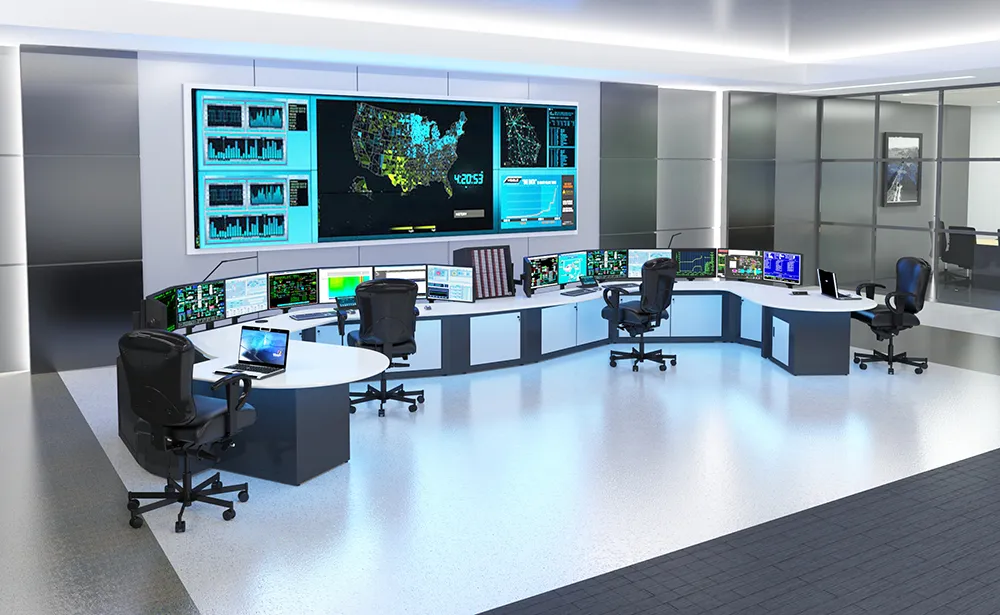All relevant information can be consulted and manipulated within a single pixel space, using a single mouse and keyboard.
With one click, operators can call any application into a work area positioned in front of them and interact with the application while maintaining an overview of the other applications still present in the peripheral vision. Barco believes this provides a more ergonomic and intuitive way of working, contributing to lower stress levels and better decision-making.
In addition, OpSpace can provide secure access across multiple domains, integrating only at the presentation layer. Operators are physically separated from the back-end systems that host the content, ensuring the system complies with governmental regulations and corporate requirements.
Barco’s OpSpace boosts efficiency of control room operators
Barco’s new OpSpace provides a number of displays on an operator’s desk, creating a single workspace for viewing, monitoring and interacting with multiple clients that reside on multiple networks with different security clearances or liability concerns.
June 1, 2016
Read time: 1 min










